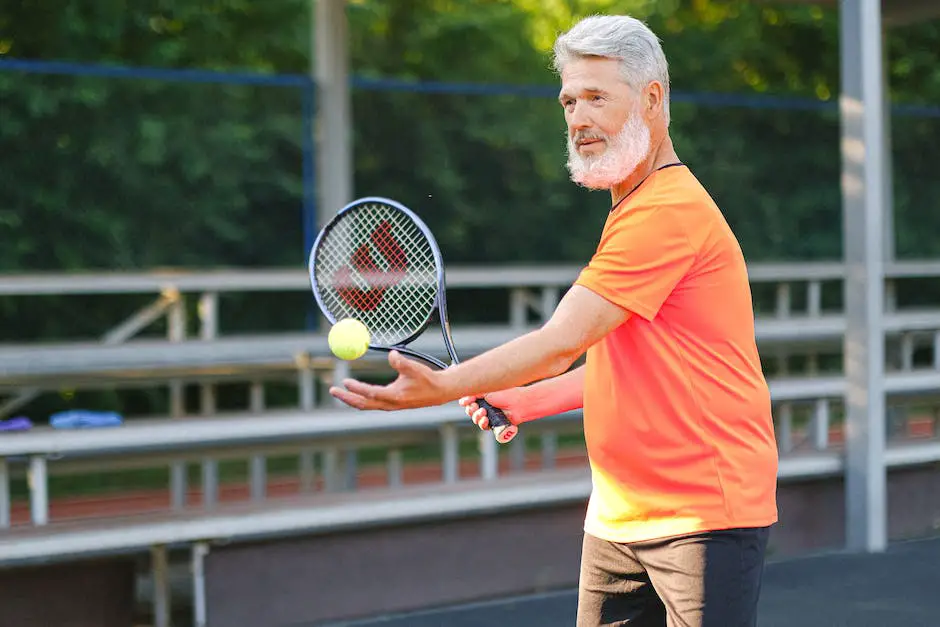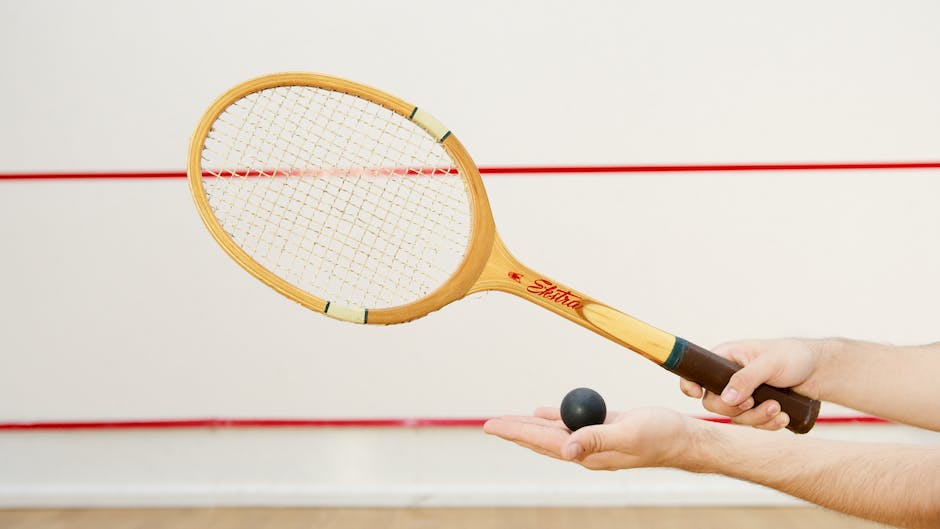Whether you’re an experienced sports enthusiast stepping out of your comfort zone, or a beginner looking to broaden your athletic horizon, the engaging game of Padel Tennis awaits you. Inevitably deemed as a hybrid of tennis and squash, this sport isn’t rocket science but demands a nuanced understanding of its mechanics. Our insightful exploration into Padel Tennis will take you through its fundamental rules, unique scoring system, and indispensable equipment. We’ll be introducing you to the Padel Court, an arena where the wall isn’t just a boundary – it’s a valuable player in your game. Further, you’ll delve into the wide array of Padel Tennis techniques that finely interweave offense and defense, such as forehand, backhand, volleys, smashes, and service. Additionally, we will spotlight the critical role played by the glass walls – a Padel trademark unlike any other racket sport.
Understanding Padel Tennis Basics
Introduction to Padel Tennis
Padel tennis is a racket sport that is popular in Spain and Latin countries, quickly gaining popularity elsewhere around the globe. It combines elements of tennis, squash, and badminton, yet it has unique rules and equipment that brings a fresh and fun twist to racket games.
Understanding the Equipment
Padel tennis is played with specific equipment – a special racket and balls. The racket used in Padel tennis is solid with no strings and it has holes across the hitting area. It is usually made of a composite material, carbon fiber or fiberglass, with a foam core. The Padel tennis ball is similar to a conventional tennis ball but has a little less pressure.
Becoming Familiar with the Padel Court
One of the most distinguishing factors of Padel tennis is its court. A Padel court is smaller compared to a tennis court, measuring 20 meters long by 10 meters wide. The court is divided into two halves by a net, similar to a tennis court. Unique to Padel however, the court is surrounded by wall structures. This enables balls to be played off the walls, akin to the game of squash.
The wall plays a vital role in Padel tennis. Since the ball can bounce off the wall after hitting the ground, players have to strategize their shots carefully. Learning to use the wall to your advantage is a key aspect in mastering Padel tennis.
Grasping the Scoring System
The scoring system in Padel tennis follows the same pattern as in tennis. Each game starts at 0 (referred to as ‘love’) and points increase in increments to 15, 30 and 40. Winning the point when the score was 40-40 (deuce) is known as ‘advantage’. Winning one point after the advantage results in winning the game.
A set in Padel is won by the first team to win 6 games, but they must be at least two games ahead. If the score reaches 6-6, a tie-break is played to decide the set.
Understanding the Rules
The basic rules of Padel tennis are fairly simple. The server has to serve the ball diagonally just like in tennis, but the serve must be underhand. The ball must bounce on the ground before hitting the wall and can only bounce once. Just like in tennis, rallies continue until a player fails to return the ball, hits it out of bounds, or hits the ball into their own half of the court.
Padel tennis is usually played in doubles, which brings strategic teamwork into play. Communication and accurate placement of shots are key to outmaneuvering the opposing team.
Conclusion
Understanding the basics of Padel tennis is the first step towards becoming proficient in the sport. Familiarize yourself with the rules, the equipment, and the distinctive characteristics of the Padel court. Then, try experiencing the fun and excitement that this game can offer by practicing and playing actual matches.

Padel Tennis Techniques
Introduction: Padel Tennis, a Game of Technique and Strategy
Padel Tennis is a dynamic and exciting game that requires players to utilize a variety of techniques, both offensively and defensively, to outsmart and outplay their opponents. The game incorporates elements of tennis, squash, and racquetball, with its own set of unique rules and strategies for success. This sport requires more than just raw power; the effective use of the glass walls, precise volleys, and well-placed shots are all integral parts of a good padel strategy.
Forehand: Power and Precision
The forehand is a vital tool in any padel tennis game. To perform a successful forehand, stand with your feet shoulder-width apart. This improves balance and allows you to pivot on your rear foot. Your racket should be back and level with your waist. As you strike the ball, shift your weight forward and follow through over the opposite shoulder. Practice until you can consistently hit the ball with control and accuracy. The speed will come naturally with time.
Backhand: Control and Consistency
Unlike in tennis, the backhand in padel tennis is predominantly played with a two-handed grip. Square your body to the net, and as the ball heads your way, turn your shoulders and take the racket back. Keep your wrists firm and incorporate your body’s rotation into the shot. This will give your backhand extra power without too much arm strain. While it may lack the sheer ferocity of the forehand, a well-executed backhand can keep your opponent guessing and tip the balance in your favor.
Volleys: Swift and Sure
In padel tennis, volleys can be game-changers. Similarly to the forehand, your feet should be shoulder-width apart and you should pivot on your back foot as you strike. Keep a light touch and watch for clever angles where you can direct the ball. Volleys provide an opportunity to catch your opponents off guard, allowing you to apply unanticipated pressure and possibly win points.
Smashes: Seizing the Advantage
A well-executed smash can end points swiftly, but it requires excellent timing and control. Take a step back as you prepare, and keep your eye on the ball. Strike when the ball is at its highest point, and use your entire body to generate power. Send the ball towards the back glass, over the opponent’s head, or bounce it off their side glass; either way, your aim is to make your return as difficult to reach as possible.
Service: Starting on a High Note
A good service is the first step to dominating a padel game. Start by bouncing the ball within a meter of the net, then strike it just after it begins to rise. Ensure your serve drops between the service line and the glass wall; this will make it difficult for your opponent to return. On the second service, aim to make the ball bounce as close to the glass wall as possible, producing an uncomfortable return for your adversary.
Offensive and Defensive Strategies: The Art of Outplaying
In padel, the defensive phase usually occurs when you’re pushed back near the glass wall. In this position, it’s crucial to stay low, focus on returning the ball, and maintain your position on the court. Try to return each ball with less power and more control, and direct it towards the corner of the opponent’s court.
When on the offensive, take the net position if possible. This allows better angle exploitation and greater court coverage. Keep your volleys deep, and try to maintain control of the center of the court. Smashes and fast volleys can be very effective here.
Utilizing the Glass Walls: An Ally in the Court
One unique aspect of padel tennis is the glass wall. At first, it may seem like a hurdle, but when used strategically, it can be a powerful ally. You can use the glass to create unpredictable bounce directions, forcing the opponent out of their comfortable space. Furthermore, the walls can be used to rebound a harsh shot without losing positional advantage, or to reach for shots that would normally be unreachable.
Combine these techniques with consistent practice, focus, and determination to become a proficient padel tennis player. No matter how competitive your gameplay becomes, remember to enjoy the game and always maintain sportsmanship!

Practice and Simulation games
Introduction: Padel Tennis, a fast-growing sport in America
Padel tennis is a fast-paced and energizing sport that is rapidly growing in popularity in America. It is a combination of tennis and squash, and is typically played in doubles on a court that is smaller and enclosed as compared to a traditional tennis court. The game stresses the importance of footwork, player positioning, and communication. Here are some instructions on how to practice and engage in simulation games to reinforce learning and master the techniques.
Step 1: Learn & Practice the Basics
Before you dive into practice drills and simulation games, it’s important to familiarize yourself with the basics. This includes correct grip of the padel racket, strokes like the forehand and backhand, and understanding the court lines. Local clubs often offer beginner classes, and there are also numerous online tutorials available.
Step 2: Developing Footwork
Footwork is crucial in padel tennis as it allows you to react quickly and effectively to your opponent’s shots. Always be on your toes, ready to move in any direction. Incorporate drills that improve skills like side-to-side movement, front-to-back transition, and small adjustment steps.
Step 3: Mastering Player Positioning
Understanding and mastering player positioning is key to both offensive and defensive play in padel tennis. As a game typically played in doubles, players must work closely together and be conscious of their respective positions on the court at all times.
When attacking, one player should be near the net while the other stays back. In defense, both players should be back. Practicing positioning drills with a partner can help you become more comfortable with this strategic aspect of the game.
Step 4: Enhancing Communication
Just like player positioning, communication between partners is critical in padel tennis. You and your partner should always communicate who is going to take the ball, especially in situations where the ball is in the middle of both players. Reinforce this through practice, calling “mine” or “yours” with each shot during drills.
Step 5: Engaging in Simulation Games
After mastering the basics, engaging in simulation games is a great way for you to apply what you’ve learned in a competitive, yet controlled, environment. Participate in friendly matches or mini-tournaments to practice your skills and get a feel for real-game situations. Treat these games as opportunities to understand your weaknesses and identify areas for improvement.
To sum it up, becoming proficient in padel tennis hinges on a combination of learning the basics, practicing drills and strategy, and actively learning from simulation games. Happy playing!

Grasping the theory is just step one into the world of Padel Tennis. Moving forward, we exhort you to dress up your knowledge in the garb of practice drills and simulation games. These hands-on experiences will not only hone your technical skills but also ensure their apt application under varying game situations. The battle between players isn’t merely about who has the sharper skills; footwork, positioning and communication also heavily consolidate your game plan. As you delve deeper into the world of Padel, remember that every stumble is a stepping stone towards mastering this dynamic sport. Armed with these insights, you’re now ready to step onto the court and conquer the game of Padel Tennis.